The Art of Making Chicken Chow Mein from ‘The Chinese Takeout Cookbook’
If you’ve ever craved the savory and comforting taste of Chicken Chow Mein, you’re not alone. This dish, celebrated for its delightful blend of flavors and textures, is a favorite for many. If you want to make your own Chicken Chow Mein, look no further than The Chinese Takeout Cookbook. This book not only provides mouthwatering recipes but also reveals the art behind crafting authentic Chinese dishes right in your kitchen.
Making Chicken Chow Mein at home can be an enjoyable and rewarding cooking experience. It empowers you to customize ingredients and adjust flavors to suit your taste. Let’s break down the essential elements and steps to create this delightful dish.
Essential Ingredients
Gathering the right ingredients is the first step to success. Here’s a list to help you prepare for making Chicken Chow Mein at home:
- 8 oz. chow mein noodles
- 1 lb. boneless, skinless chicken breast, thinly sliced
- 2 cups mixed vegetables (such as bell peppers, carrots, and broccoli)
- 3 tablespoons soy sauce
- 2 tablespoons oyster sauce
- 1 tablespoon cornstarch
- 2 cloves minced garlic
- 1 teaspoon sesame oil
- 3 tablespoons vegetable oil
- Salt and pepper to taste
The Cooking Process
Once you have all your ingredients ready, you can move on to the cooking process. Follow these steps for a delicious Chicken Chow Mein:
- Cook the Noodles: Begin by preparing chow mein noodles according to package instructions. Once cooked, drain and set aside.
- Prepare the Chicken: In a bowl, toss the sliced chicken with cornstarch, salt, and pepper. This step helps tenderize the chicken and adds texture.
- Stir-Fry the Chicken: Heat 2 tablespoons of vegetable oil in a large pan or wok over medium-high heat. Add the chicken and stir-fry for about 5-7 minutes until cooked through. Remove the chicken and set aside.
- Cook the Vegetables: In the same pan, add another tablespoon of oil. Add garlic and mixed vegetables, cooking for 3-5 minutes. You want them to stay crisp yet tender.
- Combine and Sauce: Return the chicken to the pan. Add the cooked noodles, soy sauce, oyster sauce, and sesame oil. Toss everything together and cook for an additional 2-3 minutes to let the flavors meld.
Tips for Perfection
To elevate your Chicken Chow Mein, consider these helpful tips:
- For extra flavor, marinate the chicken in a bit of soy sauce and garlic before cooking.
- Use fresh vegetables for the best taste and crunch.
- Feel free to substitute chicken with tofu or shrimp for a different twist.
- Garnish with sliced green onions or sesame seeds for a pop of flavor and color.
Serving Suggestions
Chicken Chow Mein is delightful on its own, but you can amp up your meal by serving it alongside:
- Spring rolls for an appetizer
- A side of hot and sour soup
- Steamed dumplings for added variety
By following this guide, you’ll be ready to impress family and friends with a homemade Chicken Chow Mein that rivals any restaurant version. Enjoying this dish at home not only gives you satisfaction but can also be a healthier alternative to takeout.
For more inspiration and recipes from The Chinese Takeout Cookbook, explore various options that offer the vibrance of Chinese cuisine right on your dinner table. Cooking can be a joyful adventure, and with Chicken Chow Mein, you have the perfect dish to start your culinary journey!
Key Ingredients for a Authentic Chicken Chow Mein
Creating an authentic Chicken Chow Mein at home not only allows you to enjoy this popular dish but also gives you the satisfaction of mastering a classic Chinese cuisine staple. The key to a truly satisfying Chicken Chow Mein lies in its core ingredients. Let’s explore the essential components that bring this dish to life, ensuring each bite is packed with flavor and texture.
Chicken
The star of the Chicken Chow Mein is, of course, the chicken. Opt for boneless and skinless chicken thighs or breasts. Thighs tend to be more flavorful and juicier, while breasts are leaner. Cut the chicken into thin strips to allow for quick cooking and easy absorption of flavors. Marinating the chicken in soy sauce and a touch of cornstarch enhances its taste and tenderness.
Chow Mein Noodles
No Chow Mein dish is complete without its noodles. Choose fresh chow mein noodles if you can find them; they offer the best texture. Alternatively, you can use dried chow mein noodles or egg noodles. If using dried noodles, cook them first according to package instructions, drain, and rinse under cold water to prevent sticking. Fresh noodles can be tossed directly into the wok.
Vegetables
A colorful assortment of vegetables adds freshness and crunch to your Chicken Chow Mein. Common vegetable choices include:
- Bean sprouts
- Carrots (julienned)
- Cabbage (shredded)
- Bell peppers (sliced)
- Green onions (chopped)
Feel free to mix and match based on your preferences or what you have on hand. The key is to ensure your vegetables are cut into uniform pieces for even cooking.
Aromatics
Aromatic ingredients such as garlic and ginger elevate the dish’s flavor profile. Mince a few cloves of garlic and a small piece of fresh ginger to stir-fry along with the chicken and vegetables. This combination adds depth and complexity, making your Chow Mein irresistible.
Sauces and Seasoning
The right sauces and seasonings take your Chicken Chow Mein from good to great. Here’s a breakdown of the must-use ingredients:
| Ingredient | Function |
|---|---|
| Soy sauce | Provides saltiness and umami flavor. |
| Oyster sauce | Adds richness and a complex flavor. |
| Sesame oil | Enhances aroma and adds nuttiness. |
| Black pepper | Offers heat and depth to the dish. |
Mix these sauce ingredients in a small bowl before adding them to your stir-fry. This allows for an even distribution of flavor throughout your dish.
Cooking Method
The method of cooking Chicken Chow Mein is equally important. Using a high-wok or skillet allows for even heat distribution and quick cooking, which is vital for retaining the crunch of the vegetables. Begin by marinating your chicken and preparing your vegetables. Stir-fry the chicken until it’s just cooked through, then add the aromatics and vegetables. toss in the noodles and sauce mixture, ensuring everything is coated and heated thoroughly.
Feel free to experiment with flavors or add a personal touch to your Chicken Chow Mein. Whether you prefer it spicy, tangy, or with additional proteins like shrimp or tofu, the base recipe remains the same, giving you room for creativity while adhering to authenticity.
For detailed recipes and variations, visit the official Chinese Takeout Cookbook. You’ll find inspiration not just for Chicken Chow Mein, but for many delicious dishes that will enhance your culinary repertoire.
Fresh ingredients play a crucial role in creating an authentic Chicken Chow Mein. With the right choice of chicken, noodles, vegetables, and seasonings, you can whip up a delicious meal that tastes just like the takeout from your favorite Chinese restaurant.
Cooking Techniques for Perfectly Stir-Fried Noodles
Stir-frying noodles is a delightful cooking technique that translates well into various cuisines, especially when you want to replicate the flavors of popular dishes like Chicken Chow Mein. Here are some key techniques and tips to help you achieve perfectly stir-fried noodles.
Choosing the Right Noodles
Different types of noodles can yield different results when stir-fried. Consider the following:
- Egg Noodles: These are versatile and hold up well during cooking, making them perfect for dishes like Chicken Chow Mein.
- Rice Noodles: Best for a gluten-free option, ensure you don’t over-soak them before cooking.
- Soba Noodles: Made from buckwheat, these provide a unique nutty flavor and are best used in lighter, vegetable-based stir-fry.
Preparation is Key
Preparation plays a crucial role in the stir-frying process. Gather all your ingredients and have them ready to go. Here are some essential tips:
- Chop Vegetables: Cut your vegetables into uniform sizes. This ensures even cooking and makes your final dish visually appealing.
- Marinate Protein: If using chicken or beef, marinate in a mix of soy sauce, garlic, and ginger for at least 30 minutes. This adds depth to the flavor.
- Measure Sauces: Have your sauces ready, such as soy sauce, oyster sauce, or sesame oil. This will make it easier to add them on the fly.
Equipment Matters
Having the right tools can significantly impact the quality of your stir-fried noodles. Consider these:
- Wok: The traditional choice, a wok has a wide surface area that allows heat to spread evenly and creates the signature char.
- Large Skillet: If a wok isn’t available, a large, heavy-bottomed skillet can be a suitable substitute.
- Spatula: A metal spatula works well for scraping the bottom and turning the noodles efficiently.
Mastering the Stir-Fry Technique
When it comes to stir-frying, timing and temperature are everything. Follow these steps:
- Preheat Your Wok: Make sure your wok is hot before adding oil. A high temperature helps achieve that delightful, smoky flavor.
- Add Oil: Use oils with high smoke points, such as vegetable or peanut oil. Avoid using olive oil, as it has a lower smoke point.
- Cook Protein First: If you’re using meat, cook it until browned and nearly cooked through. Remove and set aside to prevent overcooking.
- Add Aromatics: After cooking the protein, add garlic, ginger, and scallions. Stir them quickly to release their flavors.
- Add Vegetables: Start with harder vegetables like carrots and bell peppers, followed by softer ones like broccoli or snow peas.
- Combine Noodles: add your cooked noodles back to the wok. Mix with the other ingredients and pour in your sauces, tossing everything quickly.
Ensure every noodle is coated with sauce and heated through.
Finishing Touches
After stir-frying, it’s important to add those final touches that elevate your dish:
- Garnishing: Fresh herbs like cilantro or sliced green onions can add a refreshing contrast.
- Crunch: Consider tossing in roasted peanuts or sesame seeds for an added texture.
- Serve Hot: Stir-fried noodles are best enjoyed right away while they’re hot and fragrant.
By following these techniques, you can create dish after dish of perfectly stir-fried noodles. Whether trying your hand at Chicken Chow Mein from The Chinese Takeout Cookbook or experimenting with your favorite ingredients, the right methods will set you up for success.
For further tips and variations, you can explore guides on stir-frying from resources like Serious Eats or Food Network.
The Cultural Significance of Chow Mein in Chinese Cuisine
Chow Mein, a cornerstone of Chinese cuisine, holds a significant place not only on dining tables but also in the rich tapestry of Chinese culture. Its journey from traditional roots to modern adaptations illustrates the evolution of culinary practices and the blending of cultures.
This dish, which translates to “stir-fried noodles,” serves as a delightful representation of Chinese cooking techniques. Traditionally made with egg noodles, Chow Mein is typically stir-fried with a variety of vegetables and proteins, reflecting local ingredients and preferences. The versatility of Chow Mein is one reason it has sustained its popularity over generations, adapting to regional tastes while maintaining its essential character.
Culinary Heritage
Chow Mein is deeply embedded in the culinary heritage of China. The origin can be traced back to the 19th century when Chinese immigrants brought the dish to America, infusing it with local flavors and ingredients. This adoption led to the creation of varieties unique to different regions, including the American-Chinese version, which often includes a sweeter sauce and more vegetables.
To appreciate Chow Mein fully, it’s essential to understand its ingredients and preparation methods:
- Noodles: Traditionally, thin egg noodles offer a delicate texture. They can be soft or crispy, depending on cooking techniques.
- Vegetables: Common choices include bell peppers, carrots, and bean sprouts, which add color and nutrition.
- Proteins: Chicken, beef, shrimp, or tofu are typical proteins, showcasing the dish’s adaptability to diverse dietary preferences.
- Seasonings: Soy sauce, garlic, and ginger provide the essential flavor base for a delicious stir-fry.
Regional Variations
Throughout China, regional variations of Chow Mein exist that reflect local ingredients and tastes:
| Region | Chow Mein Style |
|---|---|
| Beijing | Often has a more straightforward flavor with fewer ingredients. |
| Shanghai | Known for its thicker, chewier noodles with a slightly sweet sauce. |
| Americanized | Includes a mix of vegetables and often features a sweeter taste, sometimes topped with crispy noodles. |
Cultural Significance
The cultural significance of Chow Mein extends beyond its deliciousness. It embodies the story of Chinese migration and adaptation. As Chinese immigrants settled across the globe, they shared their cuisine, leading to endless variations and local adaptations that shaped cultural identities around food.
During celebrations and festivals, Chow Mein often appears as a comfort food or a special dish during family gatherings. Its ability to bring people together emphasizes the communal aspect of Chinese dining culture, where meals are shared and enjoyed as a wholesome experience.
Chow Mein in the Global Context
As global interest in Chinese cuisine has surged, Chow Mein remains a staple in Chinese restaurants worldwide. This enduring popularity can be observed in various culinary contexts:
- Takeout Culture: Many opt for Chow Mein as a quick, satisfying meal option, symbolizing convenience in today’s fast-paced world.
- Fusion Cuisine: It has inspired chefs to experiment, creating fusion dishes that merge Chow Mein with local flavors, making it a dynamic part of modern gastronomy.
- Food Festivals: Chow Mein often features prominently in food festivals, showcasing its versatility and appeal through special recipes and innovative presentations.
As you explore the culinary wonders of Chow Mein, consider trying your hand at a recipe from The Chinese Takeout Cookbook. This cookbook captures the essence of taking traditional recipes into contemporary kitchens while allowing you to recreate the magic of authentic Chow Mein at home.
The cultural significance of Chow Mein in Chinese cuisine cannot be overstated. It serves as a delicious reminder of the heritage and history that shape our food experiences today. Whether you enjoy it from your favorite local restaurant or make it at home, Chow Mein connects you to a larger narrative of culture, migration, and culinary artistry.
Variations of Chicken Chow Mein Around the World
Chicken Chow Mein is a beloved dish that has found its way onto the menus of Chinese restaurants around the world. This delightful stir-fried noodle dish can differ widely depending on where it is prepared. Let’s explore the various delicious variations of Chicken Chow Mein across different countries and regions.
United States
In the United States, Chicken Chow Mein typically features a mix of crispy fried noodles and tender chicken, enhanced with a variety of fresh vegetables like bean sprouts, carrots, and snow peas. The dish often includes a soy-based sauce, which gives it a savory flavor. Additionally, American versions may lean towards a more westernized palate, incorporating ingredients like sesame oil or even a bit of spice.
Canada
Canadians also enjoy a unique take on Chicken Chow Mein. A favorite is the “Chow Mein Spring Roll,” which is often served as an appetizer. This variation features the classic stir-fried chicken and vegetables, but it’s rolled inside a crispy wrapper and deep-fried to perfection. The flavor profile remains close to the traditional dish, ensuring a familiar taste in a new form.
Australia
In Australia, Chicken Chow Mein is often prepared with a focus on fresh local produce. The inclusion of native vegetables adds a unique twist to the dish. Typical ingredients might include bok choy, mushrooms, or even kangaroo meat for those adventurous eaters. Additionally, Aussie chefs typically emphasize health and often opt for less oil and sauce compared to their Asian counterparts while still keeping the dish flavorful.
United Kingdom
The British version of Chicken Chow Mein tends to feature more sauce and often comes served with a side of rice rather than fried noodles. British-Chinese restaurants frequently offer a “Crispy Chicken Chow Mein,” which emphasizes crunchy textures by incorporating fried shallots or peanuts for added depth. The sauce can vary from soy to a sweeter flavor, making this variant quite distinctive.
India
In India, you might find Chicken Chow Mein infused with local spices. This fusion of flavors can lead to a spicy version, where classic ingredients are complemented with curry powder or chili paste. Additionally, Indian chefs may substitute traditional chow mein noodles with local wares like sev or bhaji, creating a dish that offers an exciting twist on the classic recipe.
Philippines
The Chicken Chow Mein in the Philippines is often lumped together with a broader category called “Pancit.” In this country, chow mein is typically served with a variety of toppings, such as boiled eggs and local herbs, giving it a unique flair. The emphasis is on a mix of flavors, where sweet, savory, and spicy components play off each other in this colorful dish.
Mexican Fusion
In recent years, a Mexican fusion version of Chicken Chow Mein has emerged, incorporating traditional ingredients like cilantro, lime, jalapeños, and even avocados. This version offers a refreshing take and presents a vibrant combination of flavors that celebrates both Chinese cooking and Mexican cuisine.
Table: Variations of Chicken Chow Mein
| Country | Key Ingredients | Distinct Features |
|---|---|---|
| United States | Bean sprouts, carrots, snow peas | Fried noodles, soy-based sauce |
| Canada | Vegetables, spring roll wrapper | Chow Mein Spring Roll appetizer |
| Australia | Bok choy, local veggies | Healthier preparation with less sauce |
| United Kingdom | More sauce, rice on the side | Crispy variations with peanuts |
| India | Curry powder, local spices | Spicy and unique textures |
| Philippines | Boiled eggs, local herbs | Part of the Pancit category |
| Mexico | Cilantro, lime, jalapeños | Fusion flavors celebrating both cuisines |
As you can see, Chicken Chow Mein has evolved far beyond its origins. Each variation brings in local ingredients and culinary influences, creating a rich tapestry of flavors enjoyed by many. Whether you prefer the American-style full of fried noodles or the spicy Indian interpretation, there is a Chicken Chow Mein variant that’s sure to suit your taste!
For more delicious recipes, check out The Spruce Eats and take your cooking skills to the next level!
Tips for Pairing Side Dishes with Chicken Chow Mein
If you’re looking to create a delightful dining experience with Chicken Chow Mein, pairing the right side dishes can elevate your meal. Whether you’re enjoying this classic dish from The Chinese Takeout Cookbook or whipping up a homemade version, the sides you choose can enhance the overall flavor profile and make your meal more satisfying.
Here are some excellent side dishes that complement Chicken Chow Mein beautifully:
| Side Dish | Description | Why It Pairs Well |
|---|---|---|
| Spring Rolls | Crispy rolls filled with vegetables or meat. | The crunchy texture contrasts nicely with the soft noodles in Chicken Chow Mein. |
| Fried Rice | Flavorful rice stir-fried with vegetables, egg, and optionally meat. | Adds heartiness and complements the flavors of Chow Mein. |
| Steamed Dumplings | Dough filled with meat or vegetables, steamed to perfection. | The soft, chewy texture balances well with the stir-fried noodles. |
| Chinese Broccoli | A green vegetable with thick stems and dark green leaves. | Its slight bitterness adds depth to the sweetness of the Chow Mein. |
Adding sides like these not only fills your plate with colors but also creates a harmonious meal. Here are some additional tips on choosing side dishes to pair with Chicken Chow Mein:
- Balance flavors: Consider the flavors in your Chow Mein. If it’s savory and slightly sweet, you may want to choose sides that bring a bit of acidity or bitterness to the table.
- Texture matters: Aim for a variety of textures. If your Chow Mein is soft and stir-fried, opt for crispy or chewy sides. This contrast enhances the dining experience.
- Think about cooking methods: Pairing a fried dish with a steamed one can add a balance of healthiness and indulgence. For example, enjoy fried spring rolls alongside steamed dumplings.
If you want to try lighter options, consider salads. A simple Asian salad with sesame dressing provides a refreshing bite that complements the richness of Chicken Chow Mein. You can easily make one with cabbage, carrots, cucumbers, and a light sesame vinaigrette.
These side options aren’t just about taste; they also help to create a more complete meal. Your guests will appreciate the thoughtfulness and variety you bring to the table. You could serve a variety of side dishes, like:
- Vegetable Lo Mein
- Szechuan Green Beans
- Miso Soup
- Chili Garlic Edamame
When opting for sauces, think about something that can either compliment or enhance the flavors. A little extra soy sauce, plum sauce, or sweet and sour sauce on the side can offer your guests options to tailor their dish to their liking.
Stay mindful of portions. Since Chicken Chow Mein is hearty, you don’t need to overfeed with side dishes. A few well-chosen accompaniments will not only satisfy appetites but also ensure your meal feels balanced and fulfilling.
Don’t forget the beverages! Pairing your meal with green tea or a light beer can add a refreshing element. These drinks help cleanse your palate between bites, making each taste of Chicken Chow Mein even more enjoyable.
By combining the right side dishes with Chicken Chow Mein, you can turn an average meal into a culinary adventure. The key is to experiment and see what combinations you enjoy most. You can explore more tips and recipes in detail through resources like Serious Eats or Chowhound. Enjoy your cooking and happy feasting!
Healthier Alternatives to Traditional Chicken Chow Mein Recipes
Chicken Chow Mein is a popular dish that many people enjoy for its delicious flavors and comforting noodles. However, traditional recipes can often be high in calories, unhealthy fats, and sodium. If you’re looking to enjoy this beloved dish in a healthier way, there are several alternatives you can consider.
One of the easiest swaps is to replace the fried noodles with whole grain or vegetable-based noodles. Whole grain options, like whole wheat noodles, provide more fiber, helping you feel full longer. Another excellent choice is to use spiralized vegetables such as zucchini or carrots. These alternatives not only cut down on carbs but also add valuable nutrients to your meal.
When making Chicken Chow Mein from ‘The Chinese Takeout Cookbook’, you can also focus on using lean protein sources. Instead of using regular chicken, consider using organic chicken breast or even plant-based proteins like tofu or seitan. These options are lower in fat and calories while still providing a satisfying bite.
Let’s explore some healthier ingredients and techniques that can enhance your Chicken Chow Mein:
- Vegetables: Add a rainbow of vegetables to your dish. Bell peppers, broccoli, bok choy, and snap peas not only add color but also boost the nutritional profile of your meal. Aim for at least half of your plate to be filled with veggies.
- Low-Sodium Soy Sauce: Regular soy sauce can be high in sodium, which may lead to health issues. Consider using low-sodium soy sauce, or even coconut aminos, as a flavorful alternative. These options can significantly reduce the sodium content while still providing that classic umami flavor.
- Healthier Cooking Methods: Instead of frying the chicken and noodles in oil, opt for stir-frying with a small amount of oil or using a non-stick pan. You can also steam vegetables to retain their nutrients and add them to the mix at the end of cooking.
Here’s a simple, healthier version of Chicken Chow Mein that you can try at home:
- 2 cups whole wheat noodles or spiralized vegetables
- 1 pound organic chicken breast, sliced
- 2 cups mixed vegetables (bell peppers, broccoli, carrots)
- 3 tablespoons low-sodium soy sauce or coconut aminos
- 1 tablespoon sesame oil or olive oil
- 1 tablespoon fresh ginger, minced
- 2 cloves garlic, minced
Instructions:
- Cook the whole wheat noodles according to package instructions. If using spiralized vegetables, set aside.
- In a large non-stick skillet or wok, heat the sesame oil over medium-high heat. Add ginger and garlic, stirring for about 30 seconds until fragrant.
- Add the sliced chicken breast to the pan and cook until browned and cooked through.
- Stir in the mixed vegetables and continue cooking for about 3-5 minutes until they are tender but still crisp.
- Lower the heat and mix in the cooked noodles (or spiralized vegetables) along with the soy sauce or coconut aminos. Toss everything together, ensuring the noodles are well coated.
- Serve immediately and enjoy your healthier Chicken Chow Mein!
For more healthy recipes and tips, check out The Kitchn and Healthline. These resources provide countless meal ideas that are both delicious and nutritious.
By making these small adjustments, you can create a healthier version of Chicken Chow Mein that your whole family will love. more vegetables, lean proteins, and healthier cooking methods brings not only flavor but also a wealth of benefits to your diet.
Try experimenting with different ingredients and flavors to find a version of Chicken Chow Mein that suits your tastes while enhancing your health.
Key Takeaway:
Key Takeaway: Exploring the Delicious World of Chicken Chow Mein
If you’ve ever craved a quick and satisfying meal, Chicken Chow Mein from ‘The Chinese Takeout Cookbook’ can be a delightful fulfillment of that wish. This dish is more than just noodles and chicken; it embodies the art of creating harmony between flavors and textures. The process of making Chicken Chow Mein, as captured in the cookbook, emphasizes the importance of selecting fresh ingredients and using cooking techniques that yield perfectly stir-fried noodles.
At the heart of authentic Chicken Chow Mein are key ingredients such as fresh chicken breast, crisp vegetables like bell peppers and snap peas, and flavorful soy sauce. These elements come together to create a savory dish that not only pleases the palate but also showcases the balance of flavors essential in Chinese cuisine. Cooking techniques, particularly the stir-frying of noodles, allow for a delightful crispness and ensure that every bite is flavorful and satisfying. Mastering these techniques can elevate your version of Chicken Chow Mein to restaurant-quality levels right in your own kitchen.
Moreover, Chicken Chow Mein carries a significant cultural legacy within Chinese cuisine. Originating from a need for quick, portable meals, it has transformed into a beloved dish worldwide, with various regional adaptations that highlight local flavors and ingredients. This versatility makes it equally appealing in countries beyond China, showcasing its universal appeal.
If you’re planning to serve Chicken Chow Mein, considering side dish pairings can enhance the dining experience. Options like spring rolls, dumplings, or a light salad can complement the dish beautifully. For those looking to lighten their meals, healthier alternatives can be incorporated by choosing whole grain noodles or adding more vegetables while reducing sodium content.
Ultimately, whether you’re cooking for yourself or entertaining guests, Chicken Chow Mein from ‘The Chinese Takeout Cookbook’ offers an opportunity to enjoy a culinary tradition that’s both comforting and versatile. With its rich flavors, cultural significance, and room for creative variations, this all-time favorite dish promises to satisfy your taste buds while fostering appreciation for the beauty of Chinese cuisine.
Conclusion
Creating Chicken Chow Mein from "The Chinese Takeout Cookbook" is more than just a cooking endeavor; it’s an exploration of rich culinary traditions and flavors. By mastering the key ingredients such as fresh chicken, crisp vegetables, and savory sauces, you unlock the essence of authentic dishes. The techniques of stir-frying not only enhance the taste but also preserve the freshness and texture of the noodles and ingredients.
Chow Mein holds significant cultural importance in Chinese cuisine, reflecting regional variations that adapt to local tastes around the globe. This dish has transcended borders, inspiring countless adaptations, each adding its unique flair while staying true to its roots. Whether it’s a classic preparation or a modern twist, Chicken Chow Mein brings together diverse ingredients that resonate with food enthusiasts everywhere.
Additionally, considering side dishes can elevate the dining experience. Simple accompaniments enhance the meal, providing balance and additional flavor. For those looking to make healthier choices, numerous alternatives replace traditional ingredients without sacrificing taste, catering to various dietary needs.
Chicken Chow Mein is not just a dish; it is an invitation to engage with a world of flavors, cultures, and culinary craftsmanship. Whether you’re replicating the classic dish from your favorite takeout or experimenting with your own variations, there’s endless joy in the kitchen awaiting you. With a touch of creativity and the right techniques, you can savor this beloved dish in a way that delights and nourishes.
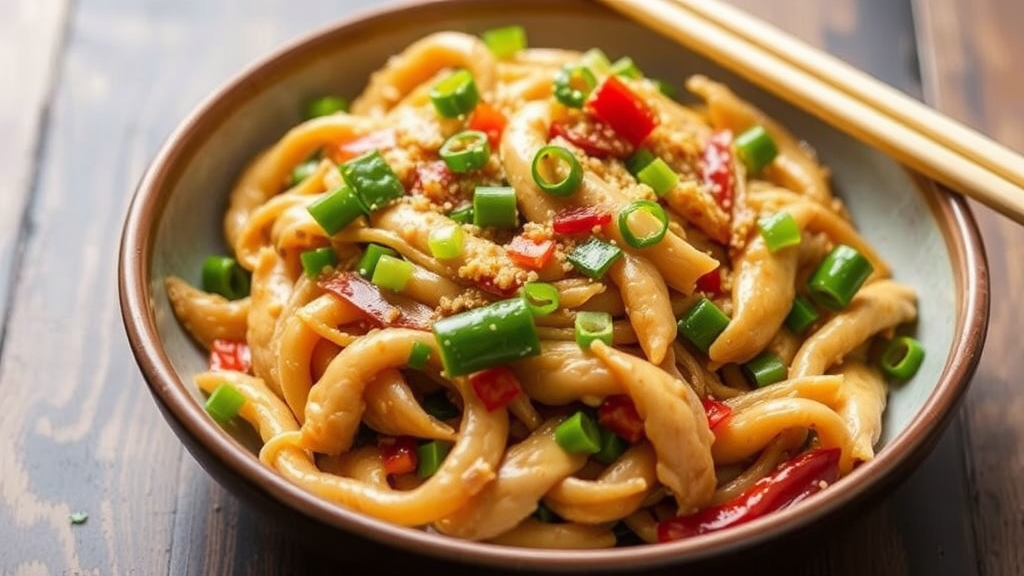

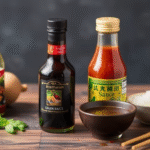
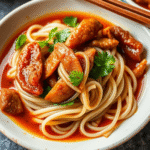
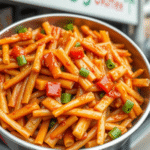
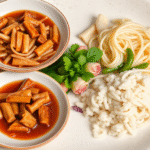
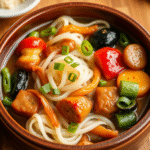
Leave a Reply